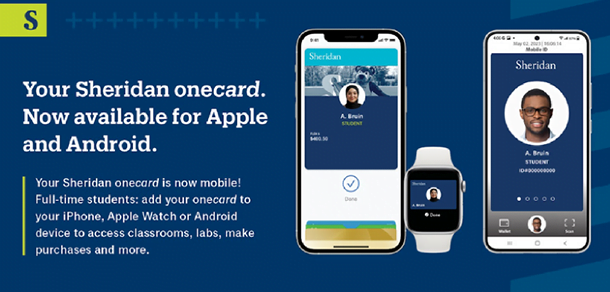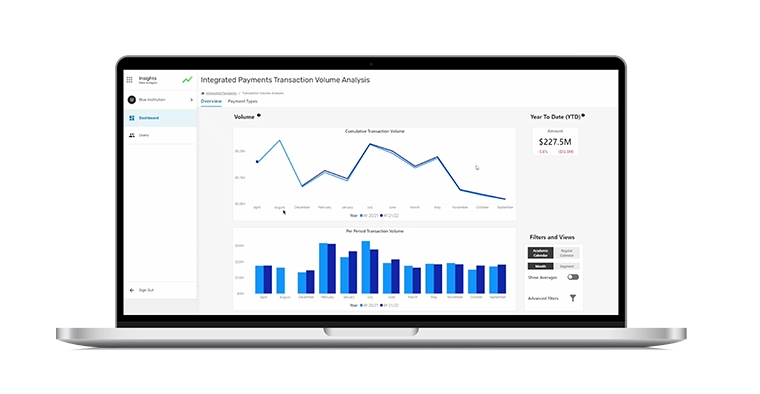
Adoption rate tops 70% adoption for first year students, reduces plastic IDs by 65%
At the start of the fall term in 2022, the Sheridan College onecard office rolled out its new Mobile onecard. The Canadian institution serves 27,000 students across its three campuses in Ontario, so launching a project of this magnitude required careful planning and a well-orchestrated marketing effort to ensure success. CampusIDNews spoke with Aesha Brown, Sheridan’s onecard Manager to learn about the project and her advice for other campuses considering a transition to mobile credentials.
CampusIDNews: How long was mobile on the roadmap for Sheridan?
Brown: This was a 3-year long journey. We started to put together a business plan in 2020 and went to RFP later that year. We elected to stay with our current provider TouchNet and partnered with them on our mobile program. We went live with our mobile onecard for students with iOS devices on Aug 29, 2022, and then exactly one year later on Aug 29, 2023 we went live with our mobile onecard for students with Android devices. We planned this project as a phased approach.
The first few weeks in September our office usually has long lines for those wanting to obtain a plastic card, but this September we saw those lines cut in half
CampusIDNews: Can the mobile credential be used everywhere the plastic card can be used?
Brown: Yes, this was important to us because we wanted a positive student experience that mimicked the plastic onecard experience but with greater convenience. Our goal is to embed onecard into everything our students do here at Sheridan with ease.

CampusIDNews: How did the move to mobile impact your card reader infrastructure?
Brown: We overhauled our entire card reader infrastructure during this project in early 2022. Rather than perform a manual upgrade on the readers, either by doing it ourselves or shipping a batch of readers on a rotating basis back to HID, we decided to just replace all the door readers. This was decided (for a variety of reasons): long shipping times of the readers back and forth to Canada and the US; doors being left without readers for too long; and manually upgrading readers ourselves would have been impossible due to the various models of readers on campus.
Approximately 1300 new door readers were replaced by a third-party contractor across three campuses within three weeks. During testing there were challenges that occurred with the performances of a few of the door readers due to the age of the buildings and lack of wiring in some locations. We were able to resolve this by changing the wiring behind some of the walls and once that was completed, we were able to re-install the remaining door readers. Overall, the time involved to get all the readers installed and the re-wiring work done took two to three months.
CampusIDNews: What role did TouchNet play in delivering the solution to campus?
Brown: TouchNet played a vital role by providing their expertise in project planning, implementation and marketing for the mobile onecard project. TouchNet has rolled out similar projects with other institutions in the US so they already had experience. The most valuable aspect of our partnership with TouchNet is that they listened to our needs and made changes to the platform to ensure the success of this project.

CampusIDNews: How do you handle provisioning of the mobile credentials?
Brown: We provision through the TouchNet 360U mobile app. Continuous improvement from the TouchNet team has made provisioning in the app much simpler. At first there were several steps needed to provision the mobile credential, but TouchNet has streamlined the platform and our students have been very happy with the change.
CampusIDNews: How did you get buy-in from the students and the campus community?
Brown: I quickly realized that not only is this project “tech heavy” it is also a large change management project. It required many layers of effective communication to the entire Sheridan community. Our onecard touches so many areas on campus, and the project could not be done in isolation. I engaged with our marketing and communications specialists at the College and we took a pan-institutional approach to ensure our marketing campaigns and communications strategy were intentional and effective.
CampusIDNews: Walk us through the process of how a student obtains their mobile credential.
Brown: Once a student is accepted at Sheridan College, they receive a welcome email from the onecard office – usually in July for a September start date – inviting them to upload a photo. Once the photo has been approved, we send students an email with a link that provides all the information they need to obtain a mobile credential. This has worked really well as students can obtain the credential before they come to campus.
The first few weeks in September our office usually has long lines for those wanting to obtain a plastic card, but this September we saw those lines cut in half and our adoption rates for the mobile onecard increase substantially.

CampusIDNews: How about plastic cards and fees?
Brown: For now, we still offer plastic onecards at no charge for those that want one. We do not charge a fee for the mobile credential, contractually it is not allowed.




